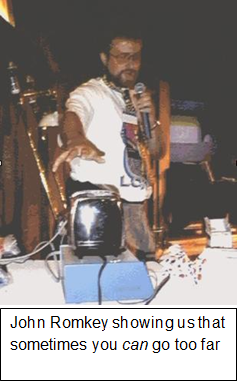The Internet of Things
By Clive Python | 14jammar
You would think that IoT is a new thing, but you'll be wrong; in fact
people have been discussing the idea for years now, the first IoT was
in 1990, where Dan Lynch, President of the Interop Internet networking
show, told John Romkey at the 1989 show that he would give him star
billing the following year if he connected a toaster to the Internet.
Just like with Google and Facebook privacy is an issue here; your
toaster can collect a lot of personal data about you and your family.
If you have a smart meter it can know when you're home and what
electronics you use when you're there - and it's shared with other
devices and held in databases by companies.
If that's not bad enough, some Security experts have been able to
hack into a number of devices, including baby monitors, automated
lighting and smart fridges and even city-wide systems such as traffic signals.
One good side about this is that not many people have connected appliances, so
not many hackers see the effort into hacking into a toaster when they could
just hack into a computer or mobile phone.
I.
"The Internet Toaster"
http://livinginternet.com/i/ia_myths_toast.htm [archive.is]
II.
What is the internet of things?
http://theguardian.com/technology/2015/may/06/what-is-the-internet-of-things-google [archive.is]
Written by Clive "James" Python, 15/09/16.
https://owlman.neocities.org/library/iot.html
https://web.archive.org/web/*/https://owlman.neocities.org/library/iot.html
The Internet of Things (or just IoT) is the idea in computer science.
The idea is that ordinary objects such as like lights, fridges, door l
ocks etc can be connected to a computer network to make them intelligent.
 They have embedded system or a computer connects that will connect them
to the Internet; this will allow people to control objects that are
connected. People will be able to turn down the volume on their TV,
they will be able to turn off light bulbs and if you want you can make
toast with a toaster connected to the Internet.
They have embedded system or a computer connects that will connect them
to the Internet; this will allow people to control objects that are
connected. People will be able to turn down the volume on their TV,
they will be able to turn off light bulbs and if you want you can make
toast with a toaster connected to the Internet.
References